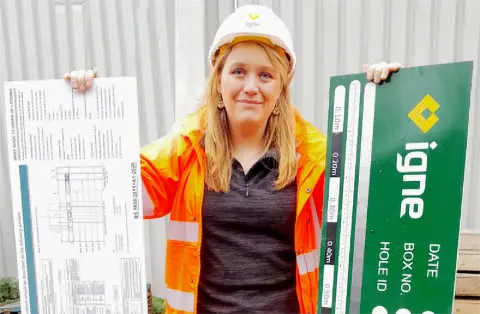Engineered Fill NHBC Standards Update
Attention Britain’s House Builders! Igne has important news regarding NHBC standards update for 2024!
Have you seen the news about the latest NHBC standard update?
Starting from 1st Jan 2025, NHBC is rolling out an updated standard, with a significant focus on engineered fill. But here's the twist - in the interim, they're scrutinising projects not just based on technicalities but also on the underlying ethos of the requirements.
The objective is to provide a performance standard and guidance where engineered fill support low-rise residential structures, external works, and infrastructure. The guidance establishes the need for appropriate levels of site investigation to appropriately disclose subsurface conditions and accordingly identify hazards. And the preparation of rational ground models that fully consider the underlying ground and groundwater regime. Then using such to prepare suitable specifications for the placement of engineered fill, using laboratory and in-situ based geotechnical testing acceptability criteria gathered throughout the life cycle of the development process (i.e., investigation to final verification and NHBC approval).
‘So what?’ we hear you shout!
The NHBC are making a concerted effort towards setting a higher performance benchmark and design standard within the industry which provides better surety for the ultimate stakeholder, the homeowner. The philosophy of the revised guidance is to limit consolidation settlements of the supporting soil to no greater than 25mm and minimising differential movement (angular distortion) across the foundation footprint as well as other interventions.
.webp)
Compliance is the key, requiring appropriately qualified people and organisations to influence the successful delivery of the low-rise development project to the satisfaction of the NHBC.
What's the game plan?
NHBC now requires submission of comprehensive documentation demonstrating a considered and site-appropriate approach, aligning with EC7 standards. It's similar to what you might have seen with National Highways' CD622 but slightly less formal.
The suitability of the ground conditions, determination of the materials identified for use as engineering fill (i.e., suitable fill), the proposed end-use and the techniques applied during its placement and compaction are all key components of the guidance. This includes the good practice advice on unacceptable formation soil (i.e., those materials forming the base onto which fill will be placed) conditions. The guidance gives detailed commentary on unsuitable soils and acceptable methods of fill improvement treatments. ????
Here's the breakdown:
- Satisfying the NHBC in terms of their technical approval requirements by providing ground investigation reporting standards commensurate to the complexity of the foundation option(s) being considered and at stages throughout the project. This will begin with a desk study and a ground investigation report (GIR) which forms the information fundamentals for the other design-based submissions.
- Fill material acceptability classification assessment.
- An earthworks specification relating to material re-use, handling, protection, and compaction methodology (e.g., method, end product and performance) relating to the engineered placement of fill material.
- Earthwork verification and the frequency at which testing should be undertaken to assess compliance with the design specification framework is also encompassed by the guidance. As this is a significant step in codifying the right approach to housing developments and gives uniformity of process to those organisations involved within the industry.
- An Earthworks verification reports will be essential to demonstrate compliance and document any adaptation or treatment carried out during the process. This will include an interpretative and evidence-based approach comprising the identification of the companies involved, the design specifications and materials used, together with:
- Survey records,
- Progress and change information,
- Test results and certificates, and
- Evidence that the earthworks undertaken comply with the specification and the proposed foundation types.
Fear not!
At Igne we’re committed to improving the built environment, enabling sustainable communities and advancing positive change. Through our values of Reliability, Quality and Partnership, we can support you if you're feeling a bit overwhelmed by all this documentation and verification.
Igne has got your back! We have subject matter experts ready to assist you with earthwork related projects and with regard to subsequent verification reporting. We'll help you demonstrate compliance and ensure all necessary adaptations or treatments are thoroughly documented.
Stay ahead of the game and ensure your projects meet the new NHBC standards with Igne by your side. Let's build better together and collaboratively construct a better tomorrow. Contact us and we'll take the weight off your mind!
Other articles of interest

Colette's coreboard innovation
At Igne, we’re proud of our innovative approach to solving challenges that fox our clients or confound our colleagues. It’s certainly a differentiator of value because it means we are active problem solvers, always looking for ways to improve.

Civil engineering university visits
Last week, Igne was delighted to welcome Northumbria University’s Civil Engineering BEng and Civil Engineering Degree Apprenticeship BEng students to our Chester le Street Office, County Durham, for our popular university tour.


